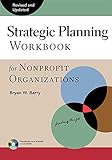Imagine two teams facing off. One meticulously plans, analyzing their opponent’s weaknesses, strategizing their attacks, and preparing for every possible scenario. The other simply shows up, hoping for the best. Who do you think has a higher chance of winning? This analogy perfectly illustrates the importance of creating effective match plans with strategic intent, not just in sports, but in any competitive field, from business to marketing, and even personal development.
What is a Match Plan and Why is Strategic Intent Crucial?
A match plan is more than just a list of actions. It’s a comprehensive roadmap that outlines your goals, analyzes your competition, identifies your strengths and weaknesses, and details the specific tactics you’ll employ to achieve victory. Strategic intent, on the other hand, is the overarching objective that drives your plan. It’s the “why” behind your actions, the ultimate outcome you’re striving for. Without a clear strategic intent, your match plan becomes a series of disconnected actions, lacking focus and direction.
Key Components of an Effective Match Plan
Defining Your Strategic Intent
Before diving into tactics, you must clearly define your strategic intent. What are you trying to achieve? Is it to increase market share, launch a new product, improve customer satisfaction, or win a championship? This clarity of purpose will guide every subsequent decision.
Thorough Competitor Analysis
Understanding your competition is paramount. What are their strengths and weaknesses? What tactics do they typically employ? What are their likely responses to your actions? By analyzing your competition, you can identify opportunities to exploit their vulnerabilities and anticipate their moves.
SWOT Analysis: Knowing Yourself
Just as crucial as understanding your competition is understanding yourself. Conduct a thorough SWOT analysis to identify your own Strengths, Weaknesses, Opportunities, and Threats. This self-awareness will help you leverage your strengths, mitigate your weaknesses, and capitalize on opportunities while minimizing threats.
Developing Tactical Objectives
Once you have a clear strategic intent and a deep understanding of both your competition and yourself, you can start developing specific tactical objectives. These are the concrete steps you’ll take to achieve your strategic intent. Each tactical objective should be measurable, achievable, relevant, and time-bound (SMART).
Creating Contingency Plans
No plan survives first contact with the enemy. Be prepared for the unexpected by creating contingency plans. What will you do if your initial tactics fail? What if your competition responds in an unforeseen way? Having backup plans ensures you can adapt and adjust as needed.
Examples of Strategic Intent in Different Fields
- Business: Increase market share by 20% within the next year.
- Sports: Win the championship by implementing a high-pressing, possession-based style of play.
- Marketing: Launch a new product successfully by generating 10,000 pre-orders.
- Personal Development: Improve fitness levels by running a marathon within six months.
Tips for Creating Effective Match Plans
- Involve your team: Collaboration fosters buy-in and generates diverse perspectives.
- Regularly review and adjust: The competitive landscape is constantly changing, so your match plan should be a living document.
- Stay flexible: Be prepared to adapt and adjust your plan based on feedback and changing circumstances.
- Focus on execution: A great plan is useless without effective execution.
 Creating Effective Strategic Plans
Creating Effective Strategic Plans
- Hardcover Book
- Bryson, John M. (Author)
- Allison, Michael (Author)
- English (Publication Language)
- Ebener, Dan R. (Author)
- English (Publication Language)
- Bryson, John M. (Author)
- English (Publication Language)
- Aubrey Malphurs (Author)
- English (Publication Language)
- Hardcover Book
- Horwath, Rich (Author)
- Dobbs, John H (Author)
- English (Publication Language)
- Bryan W. Barry (Author)
- English (Publication Language)
- Olsen, Erica (Author)
- English (Publication Language)
Conclusion
Creating effective match plans with strategic intent is crucial for success in any competitive field. By clearly defining your goals, analyzing your competition, understanding your own strengths and weaknesses, developing tactical objectives, and creating contingency plans, you can significantly increase your chances of achieving victory. Remember, a well-crafted match plan provides a roadmap for success, allowing you to navigate challenges, capitalize on opportunities, and ultimately achieve your desired outcomes. What are your biggest challenges in creating effective match plans? Share your thoughts and experiences in the comments below! Let’s discuss and learn together how to improve our strategic planning process. You can also check out our other resources on strategic planning and competitor analysis to further enhance your knowledge and skills.









